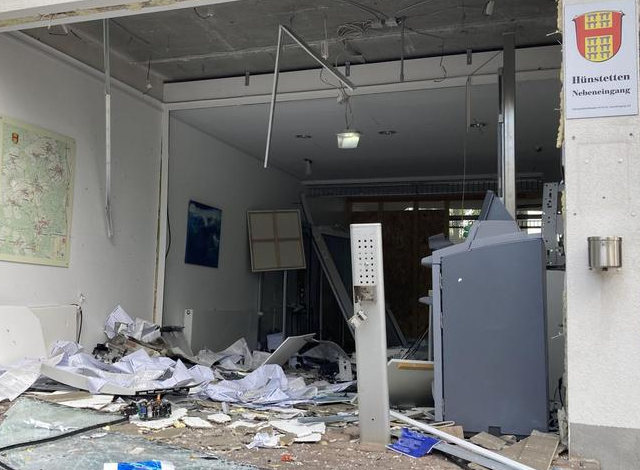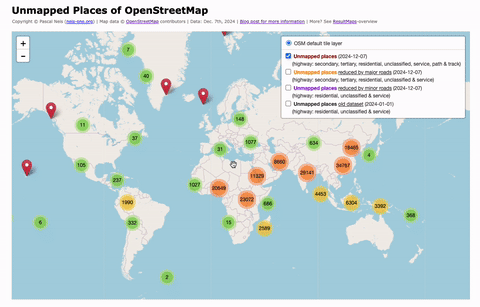Category: Analyses
-

Zwischen Wissenschaft und Kriminalität: Geldautomatensprengungen in Rheinland-Pfalz & Hessen
In den vergangenen Jahren kommt es in der gesamten Bundesrepublik Deutschland immer wieder zu Geldautomatensprengungen. Das Bundeskriminalamt veröffentlicht hierzu jährlich ein Bundeslagebild, das sowohl deskriptive Statistiken als auch weitere Informationen zu den Vorfällen in den einzelnen Bundesländern bietet. Auch in meiner Heimatgemeinde Hünstetten wurde bereits mehrfach ein Geldautomat gesprengt und ausgeräumt. Für mich persönlich war…
-

Unmapped Places of the OpenStreetMap World – 2024
In 2010, I first conducted a study which identified regions (places) in the OpenStreetMap (OSM) project in Germany that still had potential for more detailed mapping. Later, in 2016, this analysis was repeated and extended to the entire world. I have since regularly carried out these studies and published the results. The algorithm and some…
-
Detecting vandalism in OpenStreetMap – A case study
This blog post is a summary of my talk at the FOSSGIS & OpenStreetMap conference 2017 (german slides). I guess some of the content might be feasible for a research article, however, here we go: Vandalism is (still) an omnipresent issue for any kind of open data project. Over the past few years the OpenStreetMap…
-
A comparative study between different OpenStreetMap contributor groups – Outline 2016
Over the past few years I have written several blog posts about the (non-) activity of newly registered OpenStreetMap (OSM) members (2015, 2014, 2013). Similarly to the previous posts, the following image shows the gap between the number of registered and the number of active OSM members. Although the project still shows millions of new…
-
Unmapped Places of OpenStreetMap – 2016
Back in 2010 & 2011 I conducted several studies to detect underrepresented regions a.k.a. “unmapped” places in OpenStreetMap (OSM). More than five years later, some people asked if I could rerun the analysis …
-
OpenStreetMap Crowd Report – Season 2015
Almost one year has passed again. This means it’s time for the fourth OpenStreetMap (OSM) member activity analysis. The previous editions are online here: 2014, 2013 and 2012 …
-
Counting changes per Country – A different approach
OSMstats contains several statistics about the OpenStreetMap (OSM) project, such as daily-created objects, the amount of active contributors or detailed numbers for individual countries. One way to determine the sum of created or modified Node objects, is to use …
-
A précis: Where are the US mappers at?
This blog post is a summary of Dennis’ and my State of the Map (SotM) United States presentation. Maybe some of you already know about our publication: “Comparison of Volunteered Geographic Information Data Contributions and Community Development for Selected World Regions”. From the abstract: “Our findings showed significantly different results in data collection efforts and…
-
The State of the Map. United States. Street Network. 2013
Last year we wrote a journal paper in which we analyzed the OpenStreetMap (OSM) dataset of the United States which was published on May 28th, 2013 in the Transactions in GIS Journal. You can download a free pre-print version here. This paper has been published just on time to add to the discussion at the…
-
Introducing OpenStreetMap Contributor Activity Areas
One month ago I wrote a blog post about a new website which allows you to see other OpenStreetMap contributors in your area. Overall the feedback was very positive, thank you very much for that! However, now it is time for a new extension to the “How did you contribute to OpenStreetMap?” (HDYC) webpage. As…